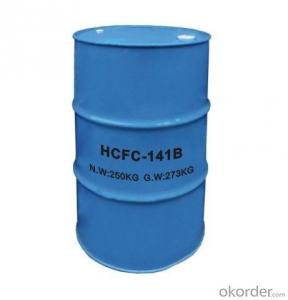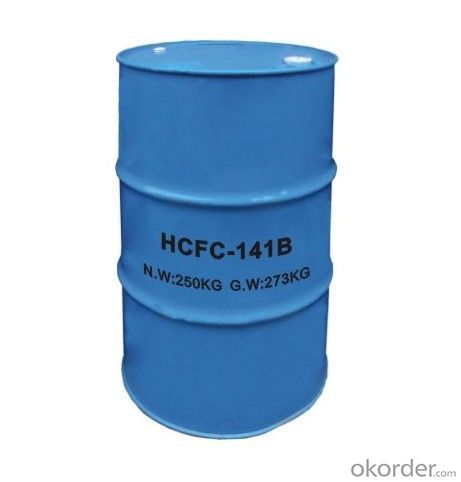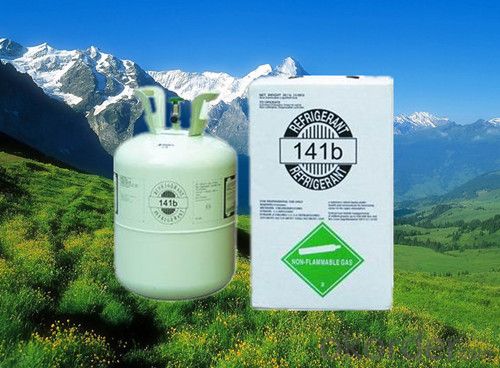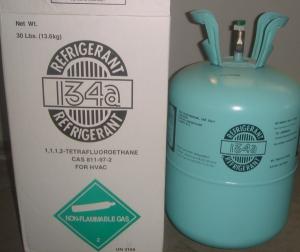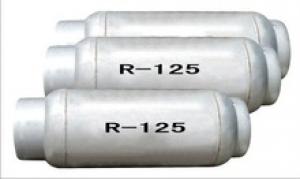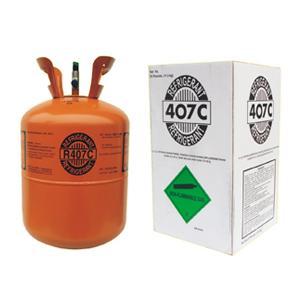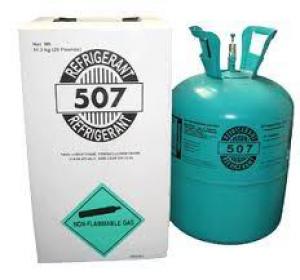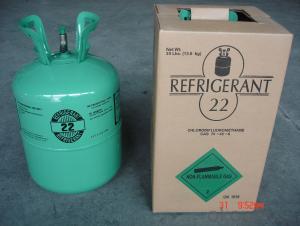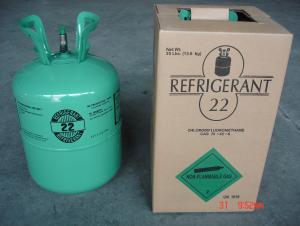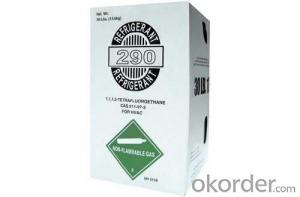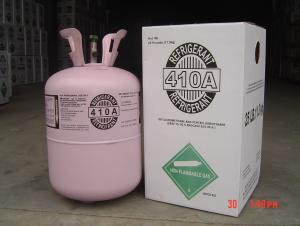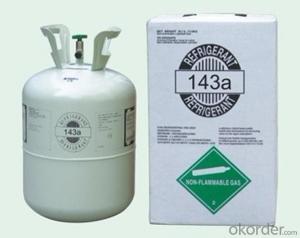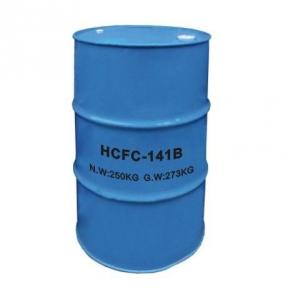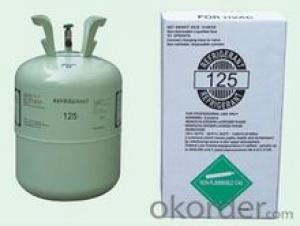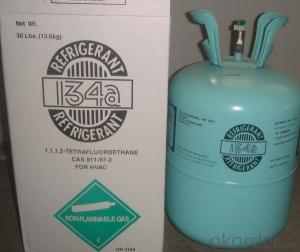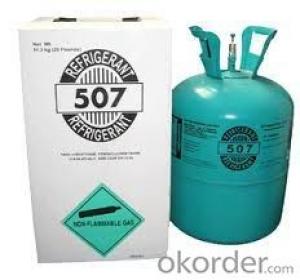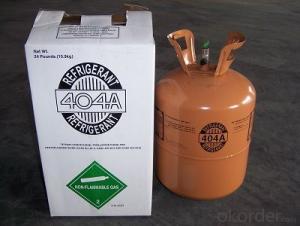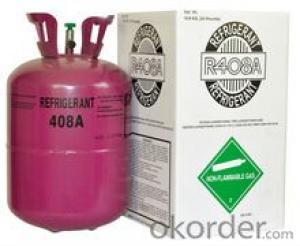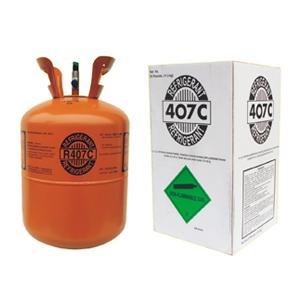R141b in Disposable Cyl
- Loading Port:
- Shanghai
- Payment Terms:
- TT OR LC
- Min Order Qty:
- -
- Supply Capability:
- 10000MT m.t./month
OKorder Service Pledge
OKorder Financial Service
You Might Also Like
Specifications
Good Quallity;
Competitive Price;
Cleaning Agent;
Foaming Agent
Dichlofluoroethane(R141b)
R141b (HCFC-141b) is the leading substitute blowing agent for CFC-11 in rigid foam insulation materials which are widely used for residential and public constructions, home applications and transport vehicles.
Properties:
Index | Unit | R141b |
Chemical formula |
| CH3CCl2F |
Molecular weight | g/mol | 117.0 |
Boiling Point 101.3 KPa(°C) | °C | 32.1 |
Freezing Point 101.3 KPa(°C) | °C | -103.5 |
Critical Pressure | KPa | 4640.2 |
Critical Temperature (°C) | °C | 210.2 |
Saturated liquid density (25°C) | Kg/m3 | 1227 |
Specific heat (25°Cliquid) | KJ/kg·k | 1.17 |
ODP |
| 0.11 |
GWP |
| 0.09 |
Quality Specification:
Index | Quality Performance |
Appearance | Bright & Clear Liquid |
Odor | No strange stench |
Purity %≥ | 99.9% |
Moisture %≤ | 0.005 |
Acidity(as HCL) %≤ | 0.00001 |
Evaporation residue %≤ | 0.01 |
Chlorides(Cl-) test %≤ | 0.0003 |
R141b Packing: 13.6kg/30lb; 30kg, 250kg drum.
- Q: What is carbohydrate? What is organic? What is it?
- Organic matter and inorganic matter is to see if there is no carbon C
- Q: Chemical life network: chemical (inorganic reaction, organic reaction) is equal to the life of life reaction?
- Inorganic chemistry is a science that studies experimental and theoretical explanations of the properties and reactions of all the elements and their compounds, in addition to hydrocarbons and their derivatives, and is one of the earliest disciplines in the development of chemistry.
- Q: Sugar, fat, and so on a variety of organic matter is full of different units of the heat of the small box. (Save the heat the most efficient, the least loss of heat the most practical and most economical box).
- Organic matter carries more richer and more easily utilized by creatures
- Q: Are all carbon compounds all organic?
- Not organic matter that is organic compounds. Carbon compounds (carbon monoxide, carbon dioxide, carbonates, metal carbides and other rare carbon compounds excluded) or hydrocarbons and their derivatives in general. Organic matter is the material basis for life.
- Q: Hydrocarbons and hydrocarbon derivatives are not all non-electrolytes
- Hydrocarbons are, derivatives are not necessarily, such as organic acids (formic acid, acetic acid, etc.)
- Q: What are the derivatives of hydrocarbons?
- In addition to the C and H elements, there are also one or more of O, X (halogen), N, S and other elements, such as methanol (CH3OH) learned from junior high school chemistry, (CH3Cl), nitrobenzene (C6H5NO2), and the like, which are mentioned in the previous chapter, are derivatives of hydrocarbons, such as ethanol (C2H5OH), acetic acid (CH3COOH)
- Q: What is the meaning of organic ah, organic food on the human body what practical benefits
- Fertilizer point of view, mainly organic fertilizer. Human synthesis of the first organic matter --- urea, but also organic matter. Organic manure is mainly manure and stool, straw straw and so on.
- Q: Organic chemistry studies the performance of hydrocarbons and their derivatives, either right or wrong
- Organic compounds refer to hydrocarbons and their derivatives. Organic chemistry is the study of the structural characteristics of organic compounds, synthetic methods and physical and chemical properties of the chemical.
- Q: What cells are composed of compounds
- Protein and water
- Q: What is organic?
- Simply refers to the organic ingredients containing organic ingredients. The real organic cosmetics are organic plants as the main raw material, do not add artificial spices, artificial colors, oil-free ingredients, the added preservatives and surfactants must be strictly limited, and the manufacturing process to comply with the relevant provisions, can not use animals Experiments and the use of radiation sterilization products. In general, the certification of organic skin care products must meet the following conditions: First, the organic environment, the closest growth of natural growth, production base (ie, the environment) are not damaged, water (irrigation water), soil (soil ), Gas (air) is not contaminated. Second, organic cultivation, no artificial fertilizer irrigation or artificial feed, without antibiotics, chemical insecticide, without genetic variants. Third, the organic processing and production projects, including the harvest after washing, finishing, packaging, processing, transportation, storage, sales and other sectors) did not subject to secondary pollution.
Send your message to us
R141b in Disposable Cyl
- Loading Port:
- Shanghai
- Payment Terms:
- TT OR LC
- Min Order Qty:
- -
- Supply Capability:
- 10000MT m.t./month
OKorder Service Pledge
OKorder Financial Service
Similar products
Hot products
Hot Searches
Related keywords
